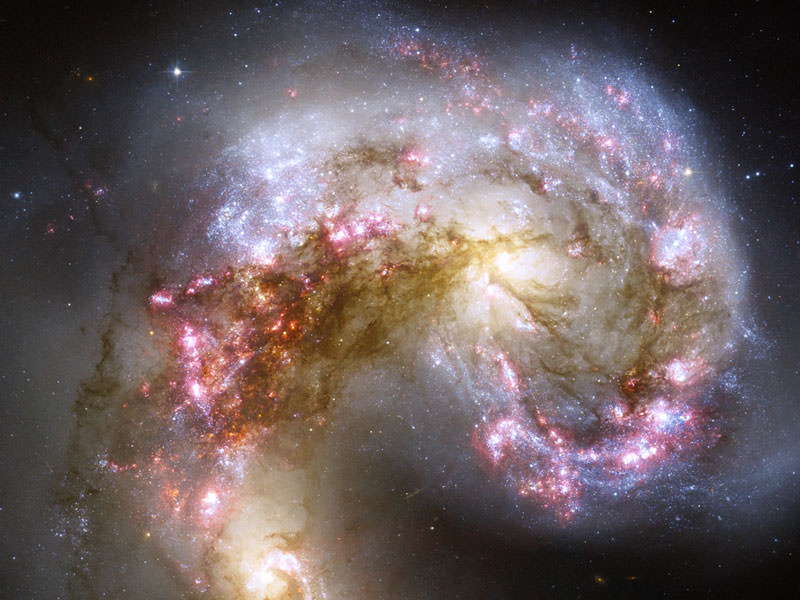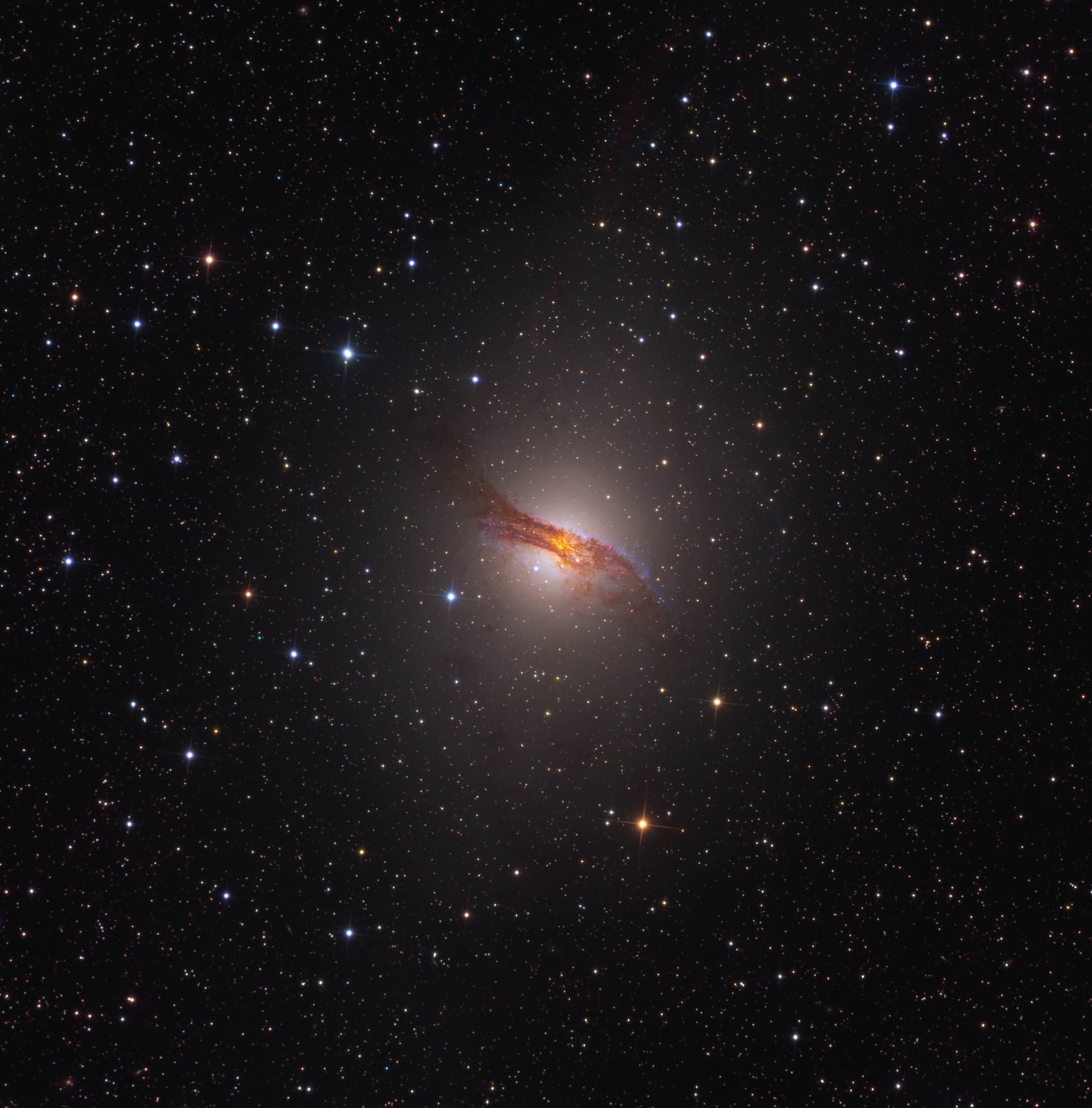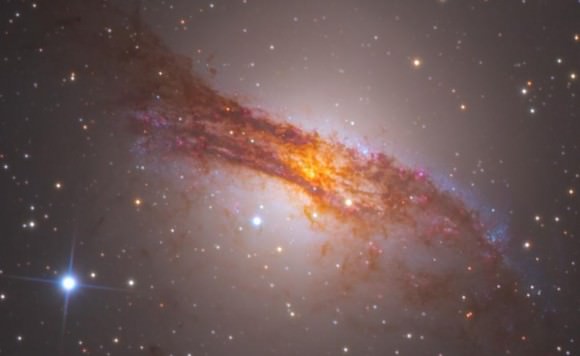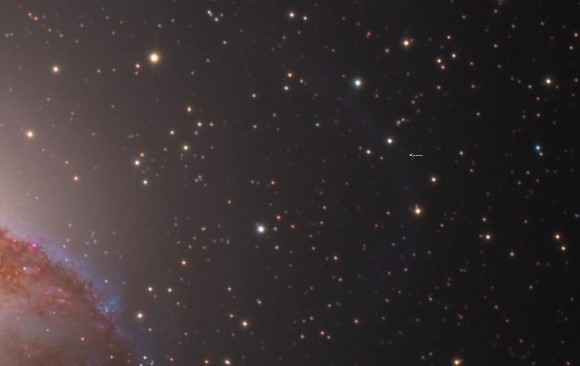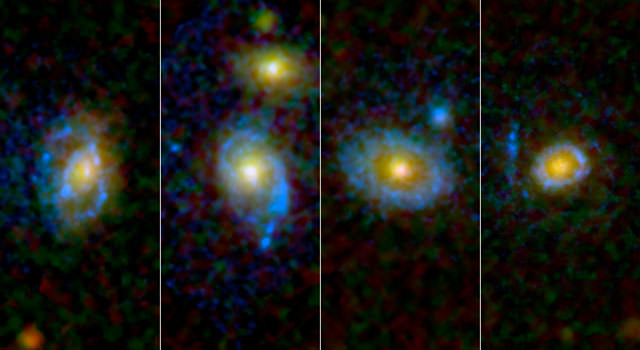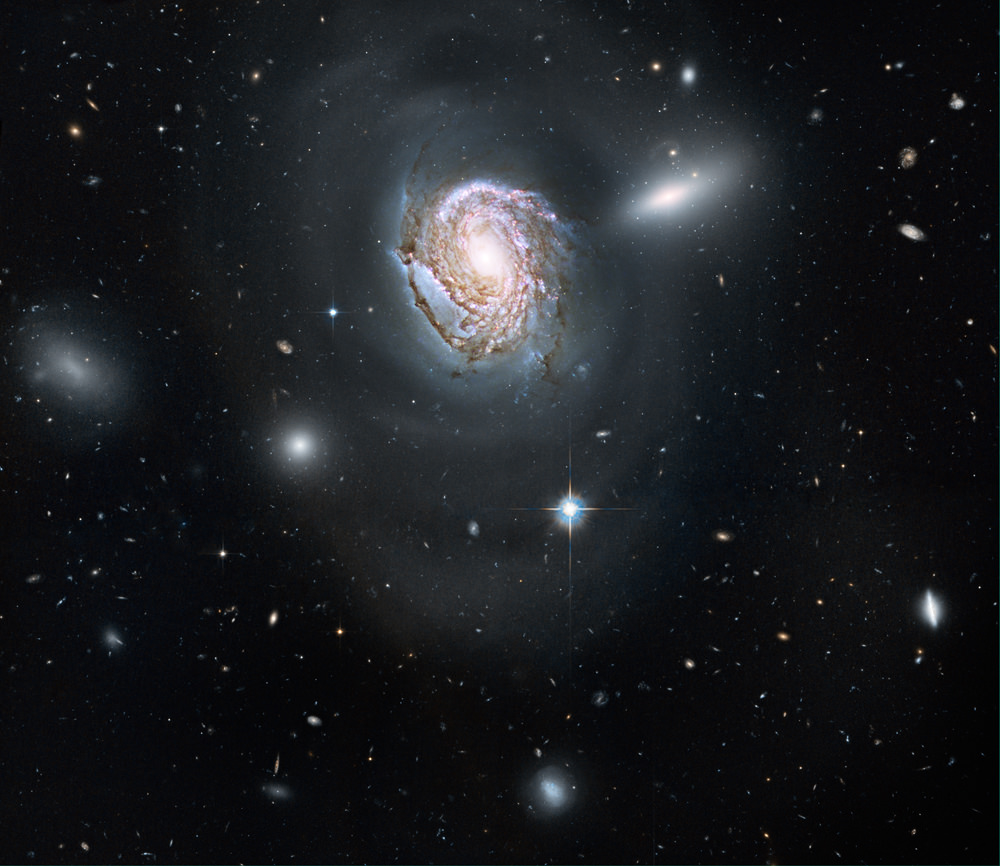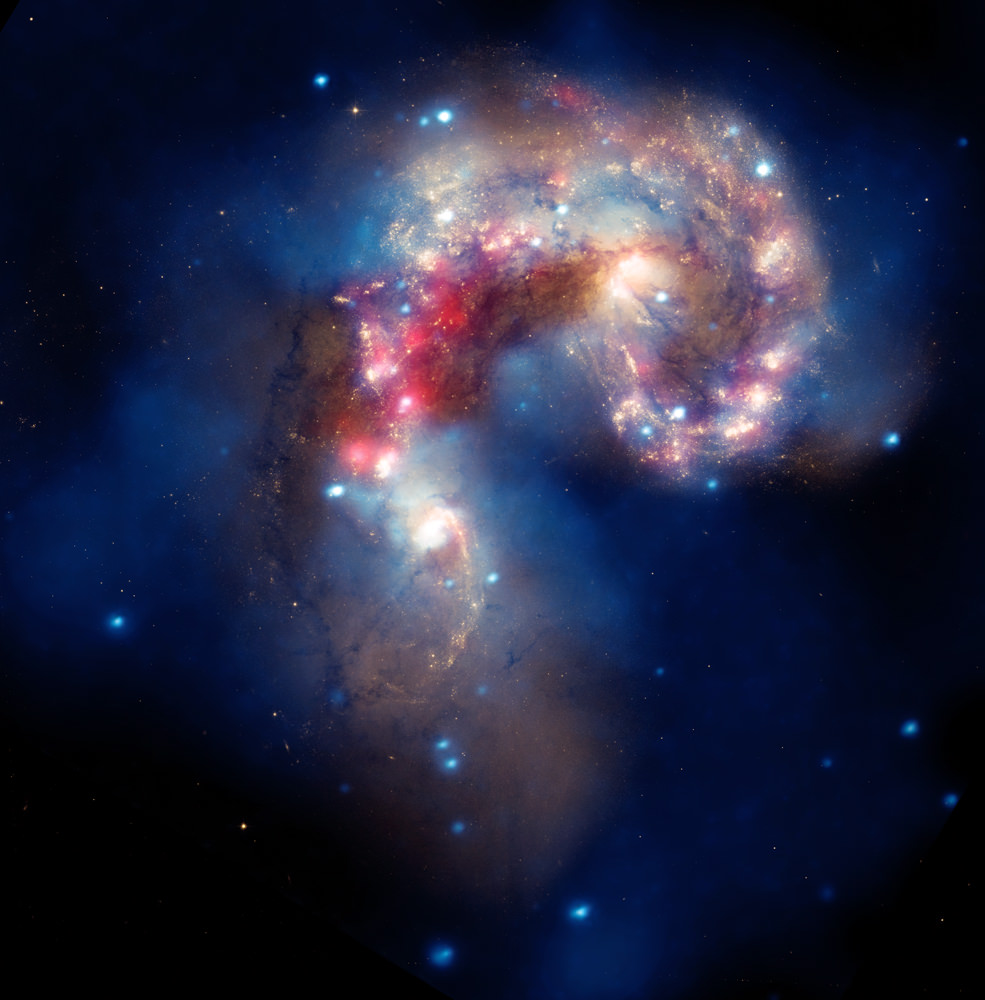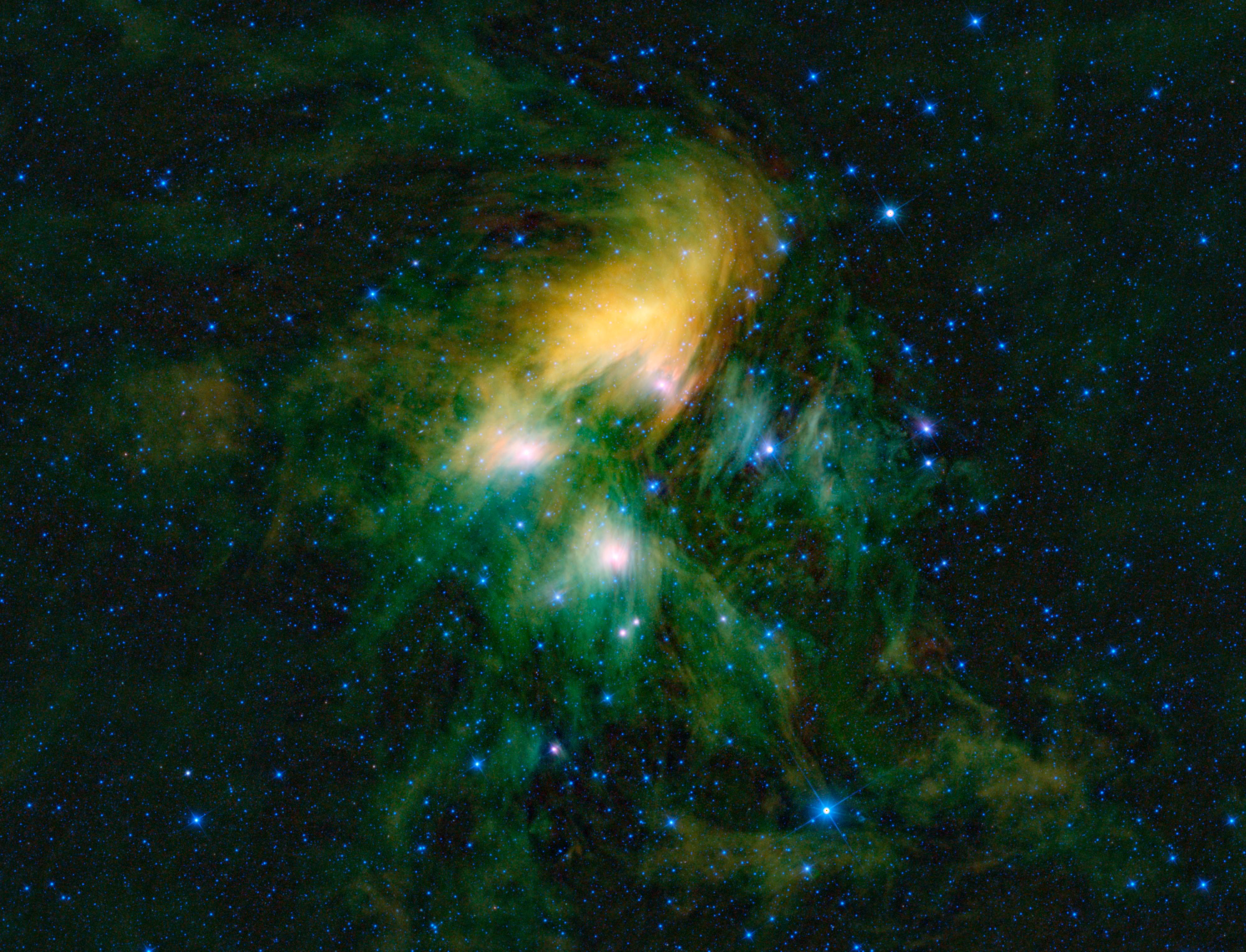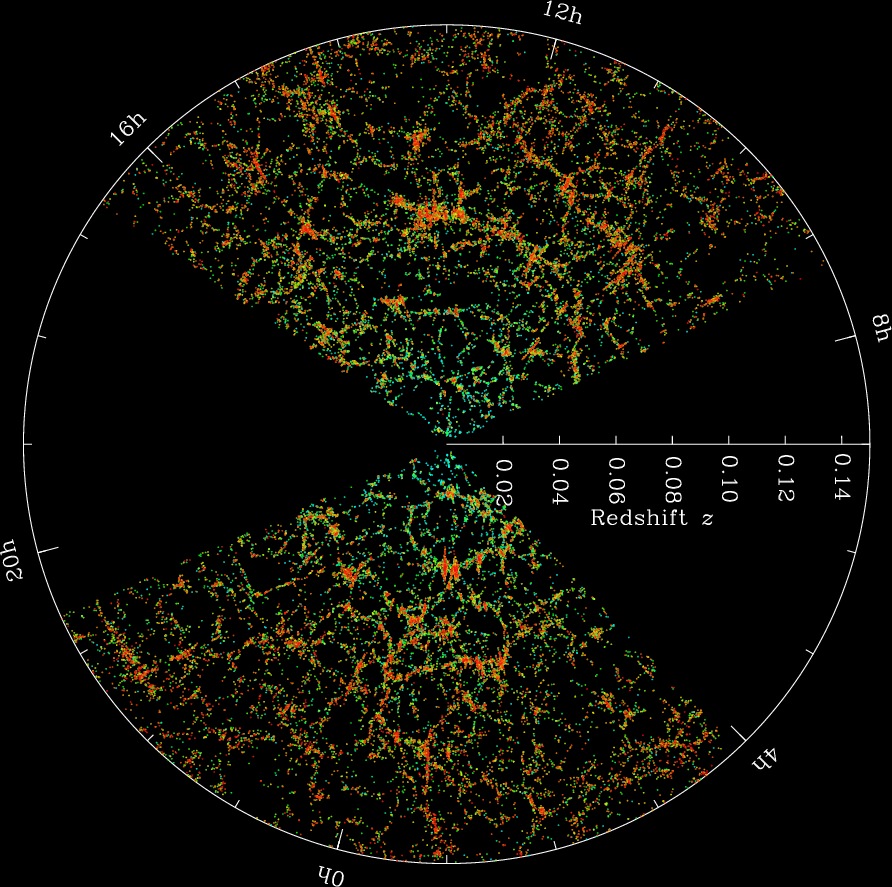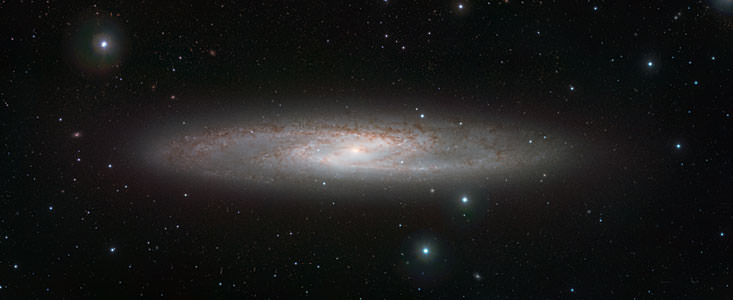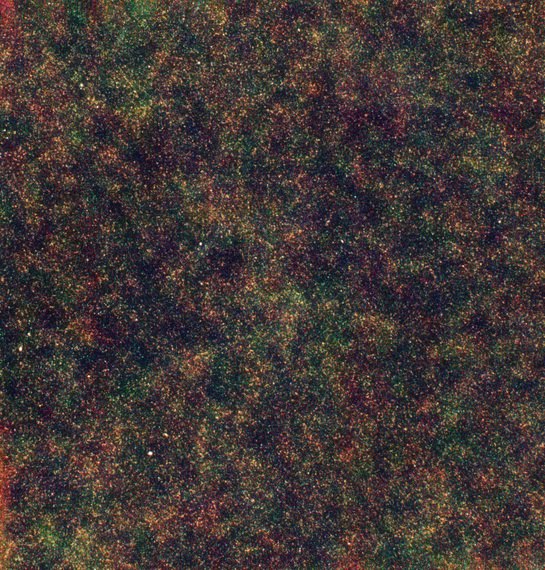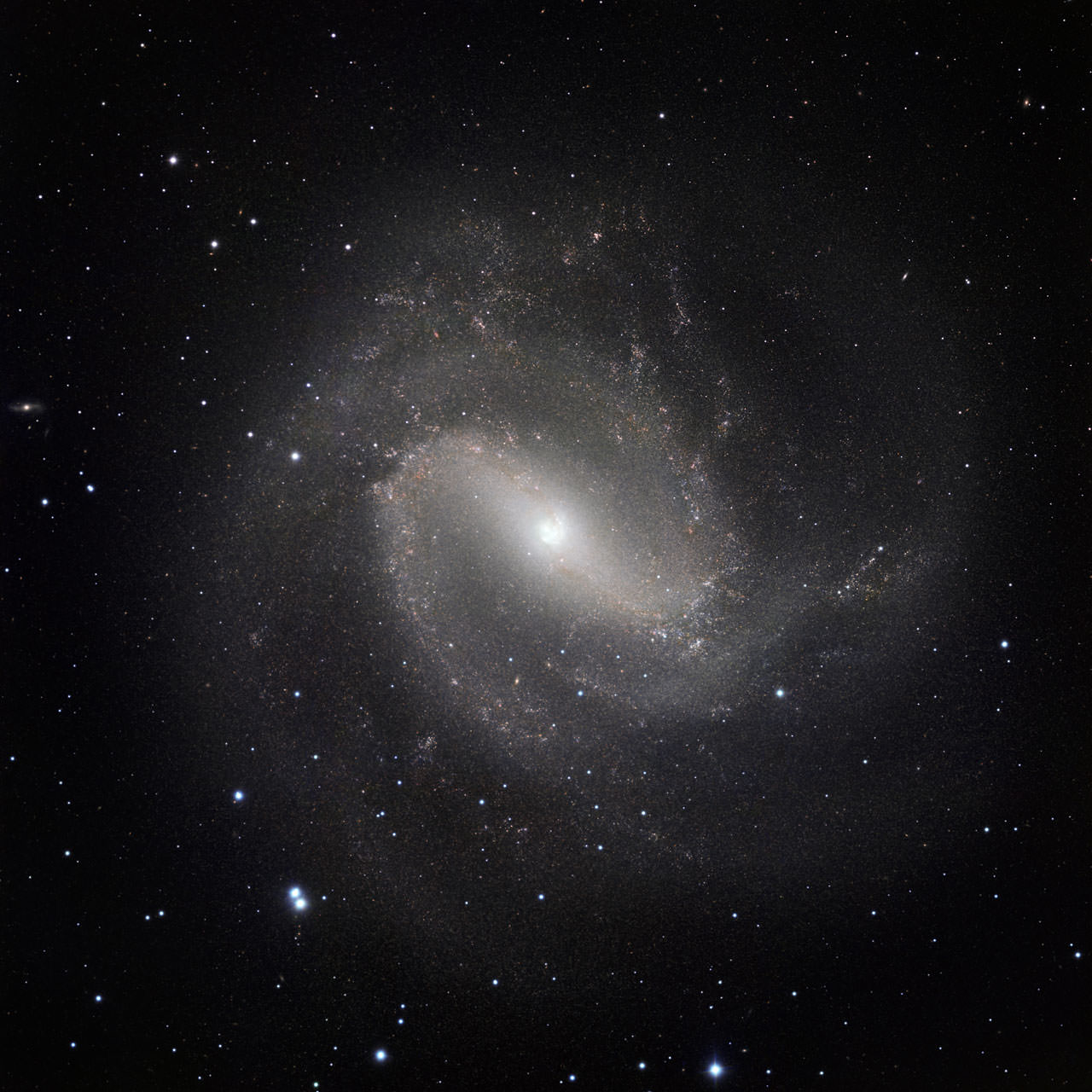[/caption]
How were the Universe’s first supermassive black holes formed? A new model of the evolution of galaxies and black holes show collisions show that colliding galaxies likely spawned black holes that formed about 13 billion years ago. The discovery fills in a missing chapter of our universe’s early history, and could help write the next chapter — in which scientists better understand how gravity and dark matter formed the universe as we know it.
Following the recent discovery that galaxies formed much earlier in the Universe’s history than previously thought, Stelios Kazantzidis from The Ohio State University and his team created new computer simulations that show the first-ever super-massive black holes were likely born when those early galaxies collided and merged together. This likely happened during the first few billion years after the Big Bang.
“Our results add a new milestone to the important realization of how structure forms in the universe,” Kazantzidis said.
Previously, astronomers thought galaxies evolved hierarchically, where gravity drew small bits of matter together first, and those small bits gradually came together to form larger structures.
But the the new models turn that notion on its head.
“Together with these other discoveries, our result shows that big structures — both galaxies and massive black holes — build up quickly in the history of the universe,” he said. “Amazingly, this is contrary to hierarchical structure formation. The paradox is resolved once one realizes that dark matter grows hierarchically, but ordinary matter doesn’t. The normal matter that makes up visible galaxies and super-massive black holes collapses more efficiently, and this was true also when the universe was very young, giving rise to anti-hierarchical formation of galaxies and black holes.”
So, that means that big galaxies and super-massive black holes come together quickly, and smaller bits like our own Milky Way galaxy — and the comparatively small black hole at its center — form more slowly. The galaxies that formed those first super-massive black holes are still around, Kazantzidis said.
The new simulations done on supercomputers were able to resolve features that were 100 times smaller, and revealed details in the heart of the merged galaxies on a scale of less than a light year.
Because of this, the astronomers were able to see two things: First, gas and dust in the center of the galaxies condensed to form a tight nuclear disk. Then the disk became unstable, and the gas and dust contracted again, to form an even denser cloud that eventually spawned a super-massive black hole.
The implications for cosmology are far-reaching, Kazantzidis said.
“For example, the standard idea — that a galaxy’s properties and the mass of its central black hole are related because the two grow in parallel — will have to be revised. In our model, the black hole grows much faster than the galaxy. So it could be that the black hole is not regulated at all by the growth of the galaxy. It could be that the galaxy is regulated by the growth of the black hole.”

This new model could also help astronomers who are searching the skies for direct evidence of Einstein’s theory of general relativity: gravitational waves.
According to general relativity, any ancient galaxy mergers would have created massive gravitational waves — ripples in the space-time continuum — the remnants of which should still be visible today.
New gravitational wave detectors, such as NASA’s Laser Interferometer Space Antenna, were designed to detect these waves directly, and open a new window into astrophysical and physical phenomena that cannot be studied in other ways.
Scientists will need to know how super-massive black holes formed in the early universe and how they are distributed in space today in order interpret the results of those experiments. The new computer simulations should provide a clue.
See this link for videos of the models of galaxy collisions.
Source: Ohio State University

